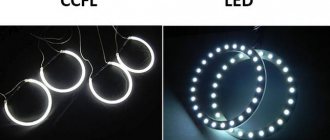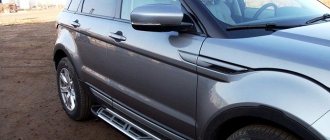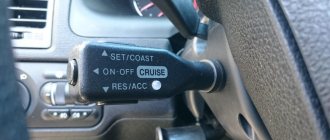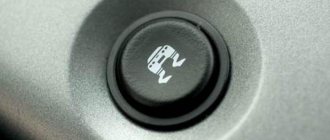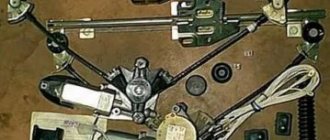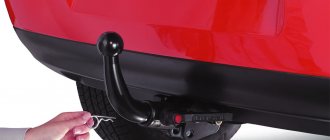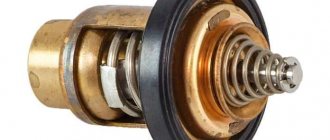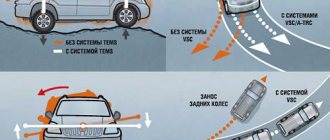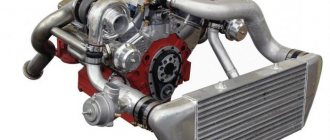External tuning of a car is quite an exciting activity, but most of the known ways to radically change the exterior of a car require investing significant amounts of money.
Most does not mean all: modification of head optics is a fairly budget-friendly option for modifying the appearance of a vehicle.
One of the most effective methods of such tuning is the installation of angel eyes. Today we will tell our readers how to do it with our own hands.
What are angel eyes
Surely you have repeatedly seen, moving along the night streets of your hometown, cars with a luminous rim around the headlights. These are the so-called angel eyes - a term first introduced into use by specialists from the design bureau of the BMW automaker. It was the Germans who in 2001, trying to make the design of their cars more attractive, used an innovative approach to the design of side lights. The E39 5 Series, which debuted at the Frankfurt Motor Show five years earlier, featured luminous rings framing the headlights for the first time. Subsequently, a team of engineers and industrial designers of the German company repeatedly improved the design of angel eyes, making it more powerful, more noticeable, and more attractive. The latest developments in this area are xenon bezels that glow with immaculately pure white light.
“Angel Eyes”: installation, features, types and reviews
Tuning the “iron horse” is a common phenomenon among car enthusiasts. With the advent of LEDs, there is not a single driver left in the world who would not want to use luminous lights. Lamps with a bright and attractive light have become a popular decoration for car headlights. This light is installed on high and low beam headlights, and is also used in the form of side lights. Such lighting innovations have an original name - “angel eyes”.
“Angel Eyes” are LED rings mounted in car headlights. This option is popular in cars with double round headlights. By installing such a device, you can highlight your car and decorate it at an affordable price.
Why do you need tuning “angel eyes”?
Currently, you are unlikely to find at least one tuning studio that does not offer the service of installing a luminous border on the front, and often on the rear, lights on a car of any brand.
But if, when the low/high beam is on, these rings do not stand out much against the background of the headlight, then in a parking lot they can be used as light signals, significantly increasing the level of safety on the night highway. Of course, this is far from the main reason for installing angel eyes - it’s just very beautiful, and there are always a lot of people who want to personalize their car. So the popularity of such decoration is quite understandable, taking into account the fact that the energy consumption of this additional lighting equipment is low - no more than what a car radio consumes, and even more so a modern multimedia center.
Varieties of angel eyes
The demand for such decoration is all the more obvious because there are many ways and techniques for making and installing such products yourself, although you can also find ready-made kits in car dealerships. But in this case, they must correspond to the make and model of the car, because the headlight configuration is not a generally accepted standard and may differ in the following set of characteristics:
- geometric dimensions and shape;
- light sources used;
- method of actuating the structure;
- installation method, depending on the design features of the head optics.
Each of the common types of angel eyes has its own set of advantages and disadvantages, therefore, so that your choice does not turn out to be wrong, it is worth familiarizing yourself in detail with the features of each of the existing technologies.
The main condition for using purchased peepholes is that their geometry and dimensions exactly follow the contours of the front headlight or rear marker lights. And the shape of the head optics can be very diverse. The simplest case is a circle or a rectangle, but designers have long not limited themselves to such primitive geometric shapes, giving preference to an oval, teardrop-shaped or other shape.
But if you plan to make angel eyes yourself, the issue of geometry compatibility will disappear by itself.
In this case, the type of light source used comes to the fore. It could be:
- a gas-discharge lamp made using CCFL technology, which is a monochrome neon glow, and any sealed tube can be used as the lamp itself;
- diode single-color devices;
- cluster single-color LEDs manufactured using Chip-On-Board technology;
- bicolor LED lamps, including two color gradations: white and orange. When the low/high beams are turned on, they light up in white; when the turn signal is turned on, they light up in orange, matching the turning light;
- multi-color lamps, the color of which can be selected using the control panel. This type is, for obvious reasons, the most attractive, but at the same time it is of little use, since it conflicts with the requirements of traffic rules (we will talk about this later).
Let's consider the features, disadvantages and advantages of each of these varieties.
Gas discharge CCFL lamps
If we talk about purchased factory products, then this is the most economical and, of course, the most popular option, characterized by quite decent brightness and uniformity of glow. The technology itself is standard - a neon lamp ignited by a cold cathode. The problem is that the market is flooded with Chinese products whose brightness is far from ideal. Such angel eyes are sold as a kit, including the glass tube itself (the geometry of which is designed for certain models, and the inner surface is coated with a phosphor designed to enhance the glow), a light diffuser, a reflector and a backing made of thin aluminum foil.
The working gas is neon, to which a small amount of mercury vapor is added. The ignition unit is designed to convert standard 12V to 500V, required to start the glow of the gas mixture. As a rule, one ignition module powers both headlights; if the AG is installed at the rear, then two ignition units will be required.
The evolution of this variety of angel eyes, the first generation of which appeared thanks to the BMW automaker, took place under the influence of competition. It soon became clear that the brightness of German neon angel eyes was inferior to the ambient lighting produced by other companies, and in order to correct the situation, German engineers had to research and develop ways to increase the power of the lamps. The experiments concerned mainly the composition of the gas mixture.
If we talk about the advantages of neon angel eyes, they are as follows:
- a fairly bright and moderately uniform glow, spreading beyond the physical boundaries of the tube, that is, forming a halo around the optics;
- low cost of ready-made kits;
- reliability and durability, achieved due to the absence of high temperatures characteristic of other types of lighting devices.
But there are a number of disadvantages:
- the presence of a small timeout when turned on (which, of course, cannot be called a critical factor for a decorative car accessory);
- the need to dismantle the headlight fairing during installation, which is not a trivial task in all models;
- Unstable operation of the ignition unit is the most unreliable element of the design.
Mostly round tubes are presented on the market, although of different sizes - this significantly reduces the scope of their application. Recently, AG in the form of optical fiber has been gaining popularity, which glows no worse and does not require the use of fragile glass and complex gas mixtures, but this is a technology that is going through its infancy with very good medium-term prospects.
LED angel eyes
If you want to make angel eyes with your own hands, then this is the easiest way. At the same time, we can confidently say that SMD LEDs have the highest brightness of all possible technologies. The design itself is a dielectric ring (or other shape). Textolite is usually used as a dielectric - a material used, among other things, for the manufacture of printed circuit boards. Using the soldering method, LEDs are soldered at a certain distance, each of which is coated with a phosphor. But since the diodes have finite dimensions, and there is no possibility of placing them closely, the glow turns out to be discrete, although very bright. However, from a distance it is not so noticeable. Another advantage of LED AG is that they connect directly to the vehicle’s on-board electrical network, without any additional devices or accessories.
Since such a design, homemade or purchased, is also installed inside the car lamp, this complicates installation. If the LEDs burn out, you will also have to disassemble the headlight to replace them. Please note that the burnout of even one LED bulb can be clearly visible, so such faults must be promptly corrected. With certain skills, you can do this work yourself.
The second problem with monochrome diode angel eyes is the heating of the structure - without cooling it will not last long. Therefore, the textolite substrate is placed in a housing with good thermal conductivity, in particular, made of aluminum, which has the ability to remove heat well.
This technology has many more advantages:
- much longer resource than that of gas-discharge analogues;
- much lower energy consumption;
- more saturated and bright light;
- if all LEDs are working, the luminous flux is distributed more or less evenly over the entire surface of the textolite ring;
- LEDs are much less susceptible to the influence of external factors, calmly withstanding temperature fluctuations in a very wide range, from 40 degrees below zero to 90-100 degrees above zero;
- When using a diffuser, the brightness decreases, but the discreteness disappears.
Cluster LED lamps
The main disadvantage of diode angel eyes is absent from analogues made from cluster LED lamps produced using COB technology. They provide more uniform light due to the use of fine-crystalline diodes applied to the dielectric surface of a solid LED by gluing. Since in this case neither a housing for each individual crystal nor a substrate is required, many more light sources can be placed per unit area. In other words, they are placed so tightly that when turned on, they appear to be a single lamp with a uniform and bright glow. This is also facilitated by the use of a phosphor common to all diodes, applied on top. Here, the burnout of one diode will not spoil the picture, remaining unnoticed.
Due to the complexity of the production technology (the distance between individual LED crystals is several microns), independent production or repair of such devices is out of the question. To power such a large number of diodes, a stabilizer is required, and this is another disadvantage of this technology.
Multicolor LEDs
LED strips have long been actively used in industrial design, advertising and other areas, and recently they have been used to make decorative elements for cars. Angel eyes produced in this way are very simple to manufacture - strictly speaking, to do this, you just need to purchase a ribbon of the required size along with a controller responsible for switching modes of the RGB color gamut. By mixing three basic colors, you can get almost any shade, including white. The advantage of the technology is that, using the controller’s remote control, you can reprogram the operation of the LED at your own discretion. The main disadvantage is that, at least in Russia, you cannot use multicolor and various lighting effects such as blinking without the risk of being fined, but we will talk about this later.
There are three main types of angel eyes offered to DLED consumers:
Each type of product has its own specific characteristics, advantages and installation.
COB-cluster
The ring-board has one LED placed, along the plane of which semiconductor crystals are evenly distributed, emitting pure white light. The light temperature in them is marked at 5000k. This LED design type is characterized by a uniform luminous flux and excellent brightness quality.
CCFL - gas discharge
Gas discharge rings are presented in the form of a thin glass tube, the inner side of which is coated with a special substance - a phosphor. It contains a special gaseous mixture inside to create efficient work, through which a high-voltage current is passed. The required voltage is created using a special ignition unit. The only drawback in such designs is the temporary process of darkening of the ring where the contacts are made.
LED - LED
The difference between this product model and the cluster design is that individual SMD-type LEDs are located in large numbers on a ring-board. This technology provides discreteness, that is, individual point light sources are separated from each other. This attracts the attention of many product connoisseurs who are faced with the choice of purchasing equipment - angel eyes for their favorite vehicle.
How to make and install angel eyes yourself
Ready-made kits of all the above varieties can be easily purchased either in auto stores or on the Internet. Many fans of external tuning do this, but here it is quite possible to run into a low-quality product. So the price should not be the main guideline, because the repair will involve the need to dismantle the headlight glasses, and on many models this is a rather complex and time-consuming operation.
But the army of homemade ones is not much smaller, and the components for making angel eyes yourself are significantly cheaper than ready-made kits. So anyone who is well acquainted with soldering radio-electronic elements can cope with this work. However, when it comes to using LEDs, the only acceptable option is to use tape. But let's talk about everything in order, and we will start with the simplest and not the most perfect scheme.
SMD technology
SMD (Surface-mount LED). In this version, the LEDs are installed in a circle on a round board. They provide very high light output. There are many styles of these rings, depending on the number and size of LEDs. SMD LEDs are mounted in a circle and create a glow in individual points. Many people like this particular look, while others want the luminous rings to be more uniform and continuous. This is done using a diffusion housing that is placed on top of the LED ring. However, this creates additional heat build-up, which reduces the lifespan of the LEDs.
“Angel eyes” SMD without diffuser and with diffuser.
SMD LED angel eyes can be with resistors or adjustable. The most common method for making SMD LED angel eyes is to mount resistors directly on the ring to control the power that goes to the LEDs. This method is quite reliable, but under certain conditions the resistors on the ring itself may become subject to excessive heat. Additionally, voltage surges can occur in a car circuit, also adding voltage to the resistors. Over time, with constant voltage, resistors may fail or operate intermittently.
To completely eliminate the problem, LED rings have been developed that do not use resistors on the rings. There are only LEDs there. To provide constant current, a regulator unit is used, which is less susceptible to voltage and temperature changes. It is attached along the line between the power supply and the LED ring. This technology allows you to install more LEDs on each ring of angel eyes, which gives a more uniform glow. It is more convenient to mount such rings, since the reverse side does not contain resistors and fits well to any surface.
Making angel eyes from PCB or plexiglass
The technology is quite simple, does not require large material costs and a large number of components. We will need:
- round rods made of transparent plexiglass or sheet PCB;
- 8 white LEDs rated 3.5V;
- the same number of resistors of 2200 Ohms each.
There is less hassle with the rods, but if there are none, you will have to cut square bars about 10 mm thick from the textolite plate. The length of the bar depends on the diameter of the headlights and is determined by a well-known formula.
But in both cases, we are dealing with a long, straight product that needs to be given a rounded shape.
So, how to make angel eyes from plexiglass? If we have a block, it must be ground so that its cross-section becomes round and not square. It is best to use a sander for this - manually it will take a lot of time. Be sure to thoroughly polish our rods - they should not have any roughness.
Now you need to change the geometry of the blanks to the shape of the headlight. To do this, take any object of the same shape as the original, heat the block with a construction hairdryer until it softens enough that it can be bent, and gradually give it the desired shape, pressing it against the stencil. You need to wear protective gloves when working.
In the lower plane of the resulting circle we drill holes for mounting our LEDs. We connect one of the diode contacts to the power wire, the other to the negative wire, and we perform this operation with all LED elements. Retreating 12-15 mm. from diodes, we solder resistors to the wires. We fix the diodes themselves in the holes using nail polish or any quick-drying glue.
You can improve the perception of such a product by cutting transverse or diagonal notches along the entire length of the round strip - in this case, the light will be much scattered, creating the appearance of rays between burning stars. The depth of such cuts should be about 3 millimeters.
LED strip angel eyes
Of course, the main disadvantage of the previous option is the large discreteness, which means the low brightness of the angel eyes. Of course, the number of diodes can be increased, but it should be taken into account that then the resistors will be located too close to each other and the LEDs, which increases the risk of overheating.
You can get rid of this drawback by using LED strip with a high density of LD elements. In addition to the tape, which can be purchased at lighting stores, we will need:
- sheet material 5-8 mm thick;
- blade used in hacksaws;
- opaque white film used as a diffuser;
- the so-called ballerina - a device for making large diameter holes;
- transparent adhesive composition;
- soldering equipment;
- special heat-resistant tape (polyamide or aluminum foil);
- heat-shrink tubing;
- a bundle of wires, preferably with terminals.
To begin, we mark the sheet of plexiglass, determining the outer and inner diameter of the ring placed on the headlight. We start cutting out from the outer contour, using a ballerina. In our case, an electric jigsaw cannot be used, since it leaves the edges of the cut melted, and we are not happy with this.
We cut out the inner contour of the circle in exactly the same way; it is not necessary to grind the outer end. Cover the top of the ring with light-scattering film. The same effect can be achieved by walking over the surface with medium-grade sandpaper - this will make it matte.
Now you can attach the LED strip to the glass base by first soldering the wires and insulating the soldering area with silicone sealant. You can cover the end of the circle with heat-resistant tape and check the operation of the circle by connecting the terminals to a 12 V power source. Angel eyes made from LED rings are ready!
Installation in headlights
Regardless of the AG manufacturing technology (and we have described only two methods, although other options can easily be found on the Internet), the finished product should be mounted on the headlight and connected.
So, we will look at how to install angel eyes using neon tubes as an example. Of course, preparing the seat for the tube will require disassembling the headlight. How to dismantle glass should be studied in the user manual - the procedure can vary greatly even within the same brand. In any case, you need to remove glass (or rather, plastic - glass optics have not been made for a long time) very carefully. After dismantling the headlight, the grooves must be thoroughly cleaned of residual sealant; for this you can use both solvents and gasoline.
As a rule, there are no ideally sealed headlights, so microscopic dust inevitably accumulates inside, which melts under the influence of high temperatures. Contaminated areas should be wiped only with a soft cloth, never allowing your hands to touch.
When connecting angel eyes to the dimensions, you need to consider how well the color of the lights will match the overall color scheme of the car. This is a rather subtle nuance that few people know about. So, for cars painted in light colors, it is better to use neon light sources, but if this is not possible, LEDs should have a cool color tone with a pronounced bluish tint. The warm, rich color of LED lamps will be ideal for dark cars.
The next stage after cleaning the headlights is installation of the AG. This is done using silicone sealant applied to the inner surface of the ring. It is desirable that the adhesive composition be transparent. Having coated the ring, carefully place it on the reflector, making sure that the distance to the headlight is the same and minimal. Press the product and wait a few minutes for the glue to set.
Connecting the wires from the angel eyes to the on-board network should only be done after the sealant has completely dried. Before reinstalling the diffuser, you should check the functionality of the device by powering the LEDs or neon lamp. Reinstalling the headlights will also require the use of sealant to fill the glass groove. The final check is carried out only after the sealant has hardened.
How to choose between neon and LED technology
Frankly, we find it difficult to give specific advice on which of the above technologies is better. Each of them has its own advantages, but is not without its disadvantages, and you will have to determine how suitable they are for you, taking into account all factors.
What do we have in the case of Angel eyes, manufactured in a factory using CCFL technology?
The advantages are as follows:
- perfectly uniform distribution of light throughout the entire volume of the ring;
- the device tolerates shaking and vibration well;
- the product is relatively inexpensive;
- the brightness of the neon source is moderate, softer than that of diodes;
- Despite the fact that high voltage current is required to glow the gas, the energy consumption of neon angel eyes is very low.
There are about the same number of disadvantages:
- the service life of ignition units, which are current inverters, is much lower than the service life of the tube itself (about 20 thousand hours of continuous combustion);
- The brightness of the glow increases gradually; the lamp reaches its operating parameters a few minutes after switching on;
- brightness is lower than that of LED analogues (although this is not always a disadvantage);
- LED lamps last much longer.
Angel eyes on an LED strip, including those made by yourself, have the following advantages:
- they are characterized by such high brightness that when turned on they are clearly visible even during the day, so this is an ideal option for use as navigation lights;
- The lifespan of an LED lamp is about 50 thousand hours, but everything is individual here;
- like neon tubes, LED products are not afraid of shaking;
- The technologies are comparable in terms of energy consumption - it all depends on the density of the LEDs;
- LED lamps are not afraid of temperature changes over a very wide range of values.
But there are much fewer disadvantages. The main one is the pinpointness of the glow, but this applies more to products made using SMD technology. Cluster eyes or those based on LED strips do not have this drawback. But in terms of cost, neon lamps are unrivaled if we are talking about factory products. Self-assembled angel eyes will cost much less, but the quality will certainly suffer in this case.
Finally, the high reliability of LEDs does not guarantee that one of many lamps will not burn out, and in this case, repairs on your own will hardly be possible.
The best angel eyes on the market. DLED company.
New BMW cars, with the advent of LED rings - angel eyes, acquired an incredibly charming, enchanting look, becoming a real miracle in the world of car tuning. The detail distinguished the models from the traffic flow, giving an original design. Owners of older types of BMW cars or those that were produced before restyling, along with owners of cars of other brands, were deprived of the possibility of having the looks of angels (angel eyes) on their vehicles. Currently, the DLED company is concerned about its consumers and produces a series of products - angel eyes in various versions of several types for any car.
Angel eyes replace daytime running lights or side lights, eliminating the possibility of blinding oncoming traffic. They have very energy efficient characteristics, as they consume a small amount of electricity. This helps to significantly reduce the additional load in the vehicle’s on-board network. This type of product does not overheat due to precise calculations, and, accordingly, will not affect the damage to the headlight lamps and will not melt the headlight housing.
The Russian manufacturer DLED carefully monitors the needs of car owners, keeping up with the times and actively introducing new technologies into its products. All incoming products comply with world technologies and standards. It can be used by all consumers in different directions. To get acquainted with European, real quality, it is enough to purchase DLED products without overpayments. The design of the angel eyes includes LEDs from an American manufacturer, which are characterized by high quality and have a long service life. An important addition as a protective function is the use of a voltage stabilizer, specially designed for the product to prevent early failure. The stabilizer works using an inductor, which equals the current of the on-board network in the car.
How legal is it to use such tuning?
The question of whether angel eyes are allowed requires separate consideration. The fact is that there are no regulations that directly regulate the use of such headlight upgrades. At the same time, there are clear and unambiguously interpreted settings, according to which the front lighting devices must emit exclusively white color. Thus, the use of colored or multi-colored angel eyes is unacceptable.
At the same time, many standard lighting devices, especially on older cars, emit light close to the yellow spectrum. Therefore, RGB LEDs equipped with a controller can be given a yellowish tint without particularly worrying about the consequences. But for running lights that are red, blue, green or any other color, you can get a fine, and the inspector has the right to confiscate such devices that do not comply with traffic regulations.
Note that the only exception is orange, which is acceptable for side lights and direction indicators.
As for the shape and size of angel eyes, there should be no complaints against you here. Is it possible to undergo maintenance with such an improvement? This question is no longer relevant: the institute of technical inspections in Russia has sunk into oblivion. But when receiving a roadmap for insurance, the above nuance should be taken into account. If you are planning a trip abroad, you should carefully study the traffic rules of the country you intend to visit. But, based on our experience, we assert that such retrofitting of lighting devices is not considered a serious violation anywhere, so the occurrence of serious problems is unlikely.
But owners of show cars can use colored LEDs quite legally, even in exotic colors and with lighting effects.
Choosing light rings
Production of the new product was quickly established in China. Since LEDs are in great demand, and the manufacturer strives to increase profits, the quality of the device suffers.
Over time, some crystals in the lamp stopped shining, and due to power surges they simply burned out. The reason for such shortcomings is the quality of the crystals and the lack of a 12V stabilizer. During power surges, a low-quality crystal quickly goes out, which leads to a break in the light halo, and the tuning looks pathetic.
There are several types of LED lamps for installing angel eyes.
They have their pros and cons:
- Gas discharge CCFL lamps are manufactured with a cold cathode. The device is filled with inert gas and mercury impurities. A big advantage in use is the bright and uniform glow. To operate such a backlight, an ignition unit is required, which converts a voltage of 500V to 12V. Disadvantage: weak ignition unit.
- The first diode SMDs worked on diode crystals, which is why the quality also suffered. But if one crystal burns out, it can be resoldered. Later, SMD was replaced by LEDs, which are more practical.
- LED COBs have a uniform glow throughout the entire circle of the lamp. New technologies make it possible to improve heat removal from crystals. But due to quick profit, the Chinese continue to install low-quality crystals. The disadvantages of the OWL are that if one crystal deteriorates, the ring cannot be repaired. The advantage of LEDs is that they give the most uniform color.
- LED RGB have an advantage over other “angel eyes”. Since they have different colors, the controller can produce many other colors and shades when mixing red, blue and green. Colors are changed using a remote control using an infrared port or radio channels.
- Diode two-color lamps combine the following tones:
- white and yellow;
- white and blue;
- white and green.
Auto mechanics prefer bi-xenon lenses for installing “angel eyes” on BMWs, since they can simply be turned off if the ring malfunctions.
The use of LED rings in the form of daytime running lights is prohibited.
